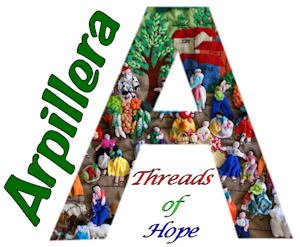

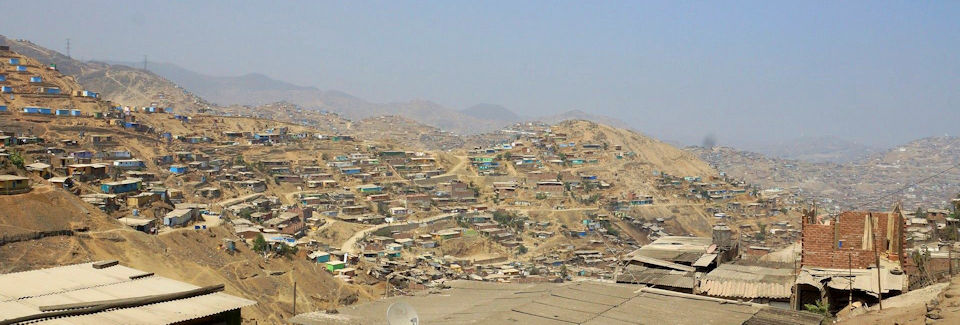
Please also have a look at Threads of Hope website; this is a USA based organisation also helping the project through sales of Arpillera. Their site has even more information and background about the project.
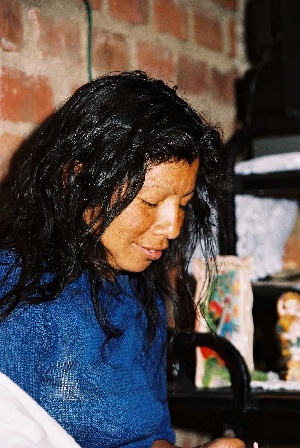 Peru has long been famous for its textiles.
In fact, textiles dating back 6,000 years have been discovered - the
fabric intact and their brilliant colors undiminished, preserved
from deterioration by the dry desert air. Arpilleras are a very
common cultural form of decoration in Peruvian households. These
wall hangings tell the story of the region where the artists are
from, describing the local life of the community. Typical scenes
include a wedding, the marketplace, workers in the fields, even
their livestock. In English terms, Arpilleras are embroidered
collages, or 3-dimensional quilts.
Peru has long been famous for its textiles.
In fact, textiles dating back 6,000 years have been discovered - the
fabric intact and their brilliant colors undiminished, preserved
from deterioration by the dry desert air. Arpilleras are a very
common cultural form of decoration in Peruvian households. These
wall hangings tell the story of the region where the artists are
from, describing the local life of the community. Typical scenes
include a wedding, the marketplace, workers in the fields, even
their livestock. In English terms, Arpilleras are embroidered
collages, or 3-dimensional quilts.
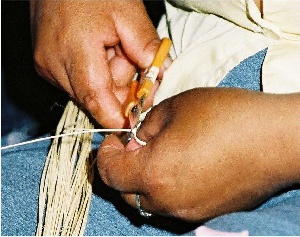 The Arpillera Sewing Project consists of
groups of women in the pueblos jovenes and invasiones, located in
the desert hills on the outskirts of Lima, who gather together
weekly to work on sewing projects and improve their sewing skills.
75% of heads of households are underemployed; the majority making a
living from informal trades in construction work as masons or
assistants. Their average monthly income range is less than $150
(£100) /month. The material that the women use is off-cuts purchased
from shops and factories by weight. After purchasing a bundle, they
sort it and decide how they can best use the fabric. They meet
together on a weekly basis, then continue working at home. The women
have become good friends and discuss their problems and pray
together at the weekly meetings. The Arpilleras they create, depict
scenes of both country life and city life in Peru, and also biblical
events, such as Noah's Ark or Jesus' birth and the visit of the 3
Wise Men. The work is very detail-oriented and requires advanced
skills.
The Arpillera Sewing Project consists of
groups of women in the pueblos jovenes and invasiones, located in
the desert hills on the outskirts of Lima, who gather together
weekly to work on sewing projects and improve their sewing skills.
75% of heads of households are underemployed; the majority making a
living from informal trades in construction work as masons or
assistants. Their average monthly income range is less than $150
(£100) /month. The material that the women use is off-cuts purchased
from shops and factories by weight. After purchasing a bundle, they
sort it and decide how they can best use the fabric. They meet
together on a weekly basis, then continue working at home. The women
have become good friends and discuss their problems and pray
together at the weekly meetings. The Arpilleras they create, depict
scenes of both country life and city life in Peru, and also biblical
events, such as Noah's Ark or Jesus' birth and the visit of the 3
Wise Men. The work is very detail-oriented and requires advanced
skills.
A member of the English-speaking congregation from the Episcopal
Diocese of Peru , Jean Samaniego, leads this group of women.
Products include Christmas trees, Christmas stockings, Christmas
tree surrounds, cushion covers, wall hangings, oven mitts,
teacosies, toilet roll covers, bags and Bible covers.
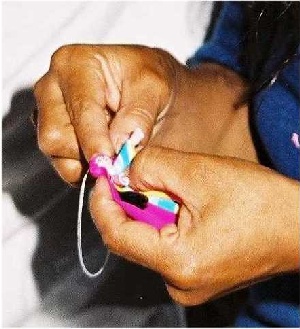 The revenue generated from the sale of
these products helps reinforce the women’s family budget. Without
support, many needs would not be met including their children’s
education.
The revenue generated from the sale of
these products helps reinforce the women’s family budget. Without
support, many needs would not be met including their children’s
education.
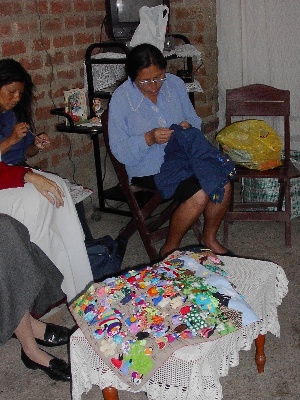 The project is specifically for making
articles to be sold in the United States and the United Kingdom. The
money raised through the sale of Arpillera articles goes directly
back to the ladies who sew the articles. They are required to use
the money for the betterment of themselves and their household. For
example, the income may be used to take a class in sewing, or build
an extra room onto their house in order to host an Arpillera group,
or send their child to a better school or to be educated in a trade.
The project is specifically for making
articles to be sold in the United States and the United Kingdom. The
money raised through the sale of Arpillera articles goes directly
back to the ladies who sew the articles. They are required to use
the money for the betterment of themselves and their household. For
example, the income may be used to take a class in sewing, or build
an extra room onto their house in order to host an Arpillera group,
or send their child to a better school or to be educated in a trade.
Items currently brought across to the UK include Christmas Trees – embroidered collages in the shape of Christmas Trees and with subject matter surrounding the Nativity – cushion covers (a recent one depicted scenes from Noah’s Ark), wonderful stoles for priests and rather spectacular large wall hangings. Chris and Nick Roberts look after the majority of UK sales, some are done through the Diocese of Worcester, partner Diocese of Peru. Chris and Nick have been supporting the project since 2004.
Financial and material support for this project will help to continue to provide resources, training and income to people in one of Lima's poorest areas.
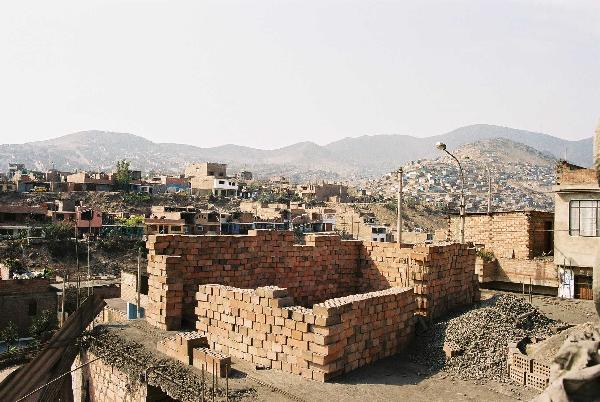
Dear Nick,
Many thanks for the profit. We are buying tables to work on, as we
always need more surfaces, and are putting in some wide shelves in a
room we have acquired in the church where we work. One of the groups
is now up to 10 members. We now have 3 groups: Sermilla (which means
Seed) which is the original group, now with 8 members. The daughter
of one of the originals was the last to join, and then married and
now comes with her 2 year-old boy.
The second group began in 2000, and was taught by one of the
founding ladies. Various babies have arrived since then, and the
mums have worked with baby asleep on lap while they sew over
him/her, or walk around with baby on back while they continue
sewing. They are called Dorcas.
The third group began in 2005, and we funded their teaching with the
extra you sent from sales, and bought fabrics for them to work with
for the first few months. We now have something put aside in a
revolving fund, so they can buy more cheaply in larger quantities
and then pay it back. Of this group 2 are studying nursing, with one
specializing in the handicapped. Their income is used to pay for
their study materials.
There are now 25 women directly involved in our meetings. They then
give work to other women (men also) as they buy some of the dolls
from someone who specializes in them, they buy baskets, sometimes
they buy the fruits and veg. for the market scenes. In fact, one of
the ladies is caring for a 12 year-old orphan boy, and has taught
him to make fruits and veg. She then brings them to the group and
sells them, to give him an income.
The basic income the ladies receive for their work always helps
towards upgrading their housing. Several have been able to put a
proper roof on, and have gradually been able to build brick walls.
several of their older children have completed training: one as a
nurse, another is completing a 3 year course in mechanics, and
another is in his 5th year of law studies. They have all had eye
tests and several definitely needed glasses, and then extensive
dental treatment has been most necessary for several. These things
would have been neglected without the steady income from the
arpilleras.